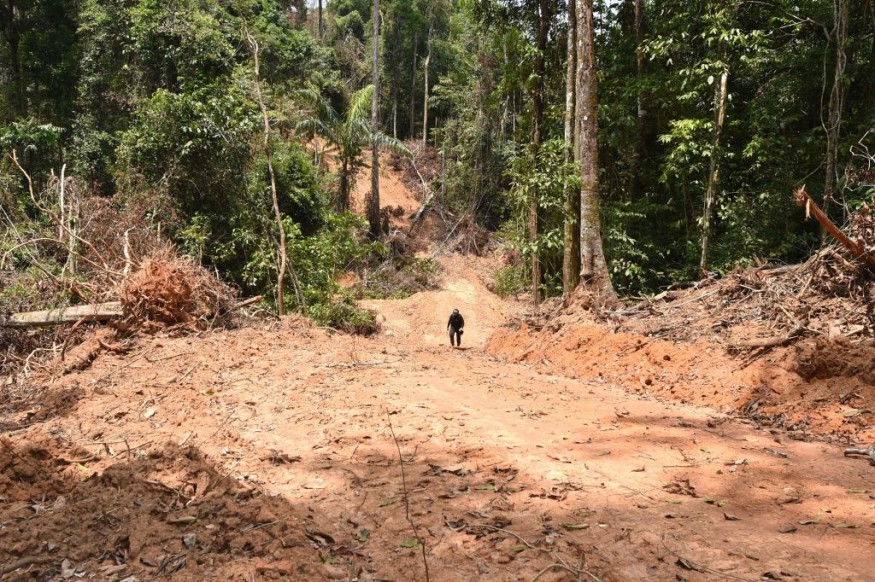It's jarring to come across a clear-cut in an ancient forest. Trees of all sizes have fallen one on top of the other in tangled jackstraw heaps, corpse-like among ragged stumps, and massive industrial tracks have rutted the ground.
Last August, when forest activist Zack Porter and I traveled a newly built logging road in Vermont's 400,000-acre Green Mountain National Forest's Pittenden Inventoried Roadless Area, this was the sight.

Porter is the executive director of Standing Trees, a citizen's group based in Montpelier, Vermont, that works to safeguard New England's woods' ecosystem.
According to Porter, the US Forest Service established this 16,000-acre roadless region in 2006. Still, the government revoked its administrative safeguards in 2019 and gave logging firms access to clear-cut areas of the Pittenden.
Clear-cutting, which entails removing most or all trees in a specific region, is described by Porter as "brutalizing the landscape," and many other environmentalists agree.
Clear-Cutting
Clear-cutting has long been common and contentious in federal and state forests. However, the Forest Service's Early Successional Habitat Creation Project currently provides new evidence that clear-cutting improves native fauna, which is widely discussed. From Michigan to Maine, just about every northern state east of the Great Plains has implemented "logging for wildlife."
The theory is that prudent clear-cutting might replicate natural disruptions such as bug invasions or storms toppling older trees, resulting in what ecologists call early successional habitat-areas where young trees and bushes prevail and species that rely on species on such habitat thrive.
Using Various Method
The Forest Service uses this method to justify commercial timber sales in the Pittenden and seven other historically roadless sections of the Green Mountain National Forest, where loggers are clearing 15,000 acres of forest.
The number of acres slated for clear-cutting under this paradigm is unknown, but forest activists estimate hundreds of thousands.
According to the advocacy group Massachusetts Forest Watch, more than 85 percent of the 200,000 acres controlled by the Massachusetts Department of Fish and Wildlife may be clear-cut to produce young, open habitat in that state alone.
Clear-cutting is praised by the Connecticut Department of Environmental Protection, which calls it "one of the most criticized and misunderstood forest regeneration techniques."
Potential Benefits?

According to Michigan's Department of Natural Resources, "can only be protected by being destroyed" keeps them young. "This means a stable supply of biomass fuel, timber, and wood pulp for Americans; it means crisp fall days were hunting deer, bear, grouse, and woodcock; it means birdwatchers scouring spring thickets boisterous with the singing of warblers returning on migration," according to the agency.
The United States of America is funding the Young Forest Project. According to its website, the Department of Agriculture currently has "natural resource agencies, wildlife groups, companies, property trusts, the United States military, universities, and colleges, [and] foresters" as members.
"Where to build young forest [and] how to do it the best manner," the initiative advises. "Guess what," the project adds, "clear-cutting isn't always bad!"
Some of the most powerful and essential conservation organizations are also supporters. The Nature Conservancy, Harvard Forest, the Appalachian Mountain Club, and several state Audubon organizations, including the venerable Mass Audubon, the nation's oldest state Audubon society, are among the Young Forest Project's collaborators.
The method appeals to timber interests because it allows them to profit from tree cutting while claiming the mantle of conservation. Hunting parties prefer it since it's simpler to find the wildlife and birds they're after in a younger, less thick forest.
Related Article : Ecuador's 'Major' Oil Spill Cause Devastating Effects in River and Protected Amazon Area
For more environmental news, don't forget to follow Nature World News!
© 2025 NatureWorldNews.com All rights reserved. Do not reproduce without permission.





